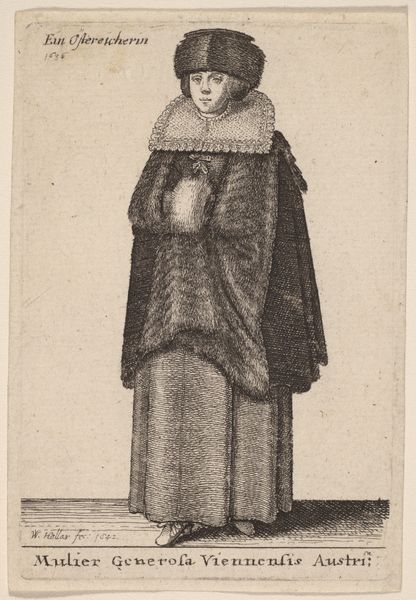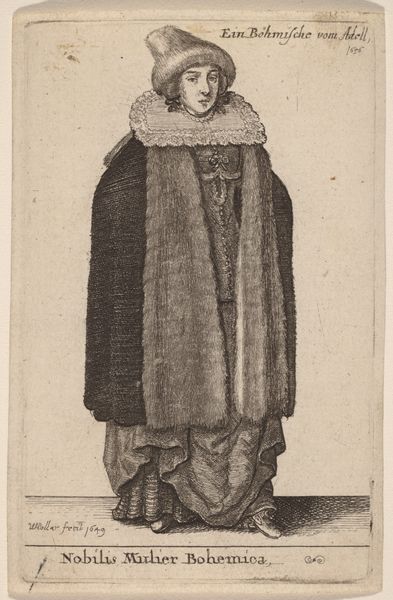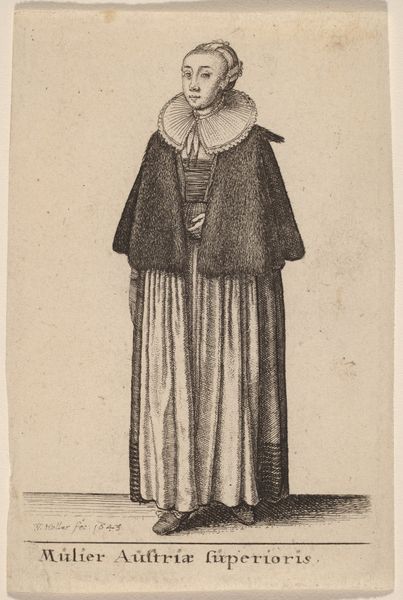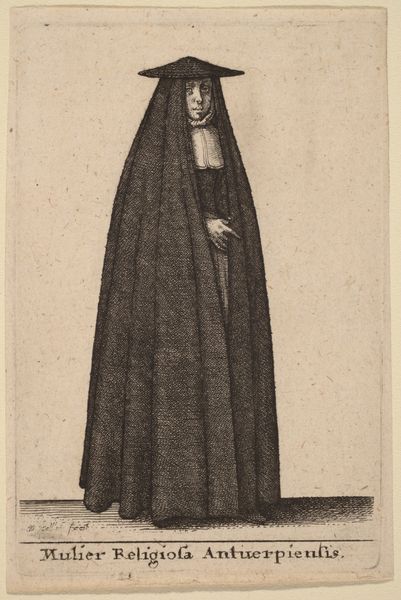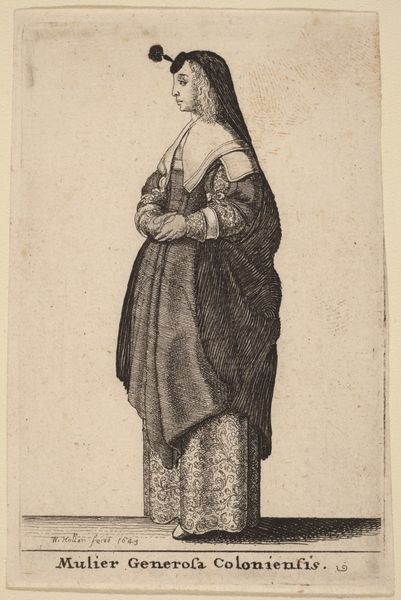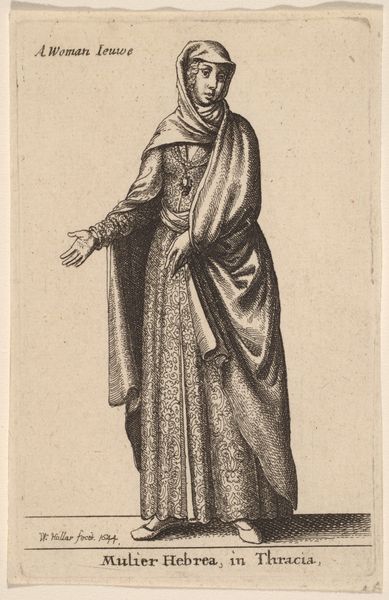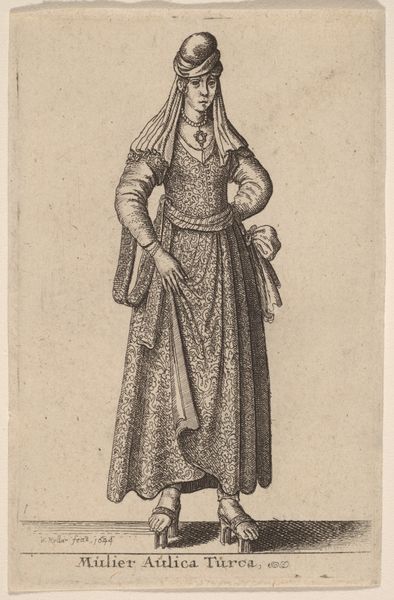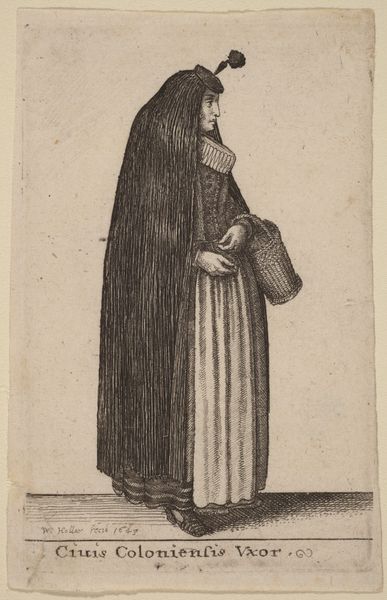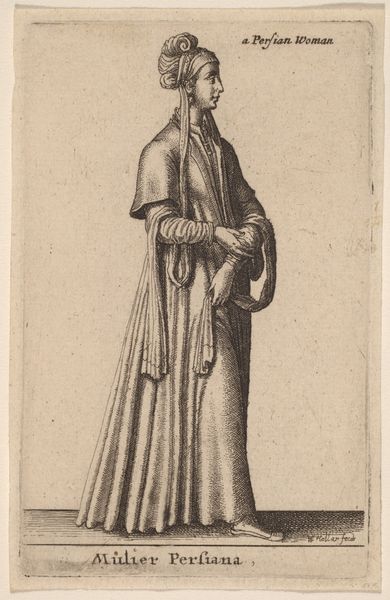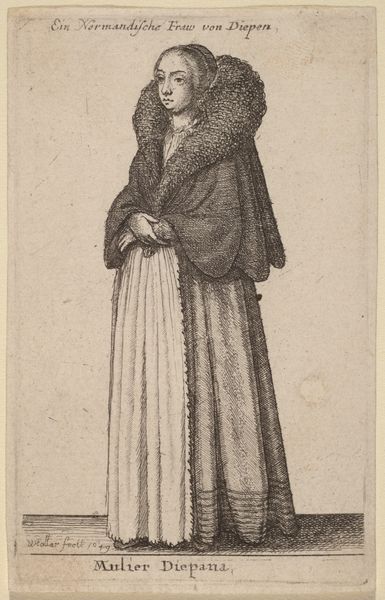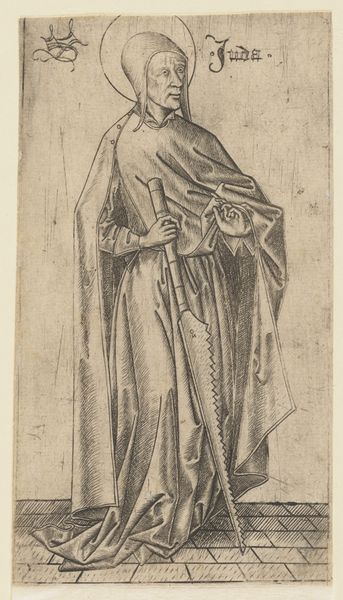
print, engraving
#
portrait
#
baroque
# print
#
genre-painting
#
engraving
Copyright: National Gallery of Art: CC0 1.0
Curator: Wenceslaus Hollar’s engraving, "Rustica Bohemica," created in 1643, offers a compelling look at genre painting of the Baroque period. What's your initial take on this piece? Editor: Striking—almost austere. The tonal range, limited by the engraving process itself, gives it a direct, unaffected quality. It draws me to the details: the folds of the garment, the subject’s expression. There's an undeniable geometric simplicity too, in the overall composition, especially given that it is a portrait. Curator: Indeed. The technical demands of engraving—the pressure, the precision—shaped the work, focusing attention on the textural qualities Hollar skillfully renders. It’s worth considering what was being depicted. We are looking at an idealised image of rural Bohemia through dress that would have indicated profession, geographic belonging and class, so the print operated as both portrait and socio-economic documentation of 17th century Europe. Editor: Exactly. Look at the way Hollar used the limited resources of line to suggest texture. There's the weight of the fabric, the fuzziness of the fur lining of her cloak. The arrangement emphasizes how essential these details are, transforming common materials into valuable semiotic devices and communicating to those familiar with Bohemian fashion norms about identity in this historical context. Curator: Precisely. And consider who Hollar was working for; how that dictated his representational strategy. Hollar spent much of his life in England, under the patronage of the aristocracy, but fled during the English Civil War back to his native Europe, depicting views, maps, and costume studies for the print market that would travel internationally. In light of these political and social contexts, this image might also be regarded as something beyond mere costume, and perhaps the beginnings of fashion as understood and circulated today. Editor: An interesting notion, that circulation and cultural impact. But isn't the success of this artwork intrinsically bound to the way its various lines create an immersive space for the eyes? The way it achieves detail using so few resources is something of a small Baroque wonder. I can keep on finding things to focus on, with those basic visual and textual elements, and I still feel so attached to her composure after some time observing. Curator: And through Hollar's expert manipulation of line and form and a savvy use of production and material to transmit an image beyond borders, we are gifted a vivid snapshot, so to speak, of a world so different from our own. It makes you appreciate just how powerful simple, portable visual records like prints can be.
Comments
No comments
Be the first to comment and join the conversation on the ultimate creative platform.
